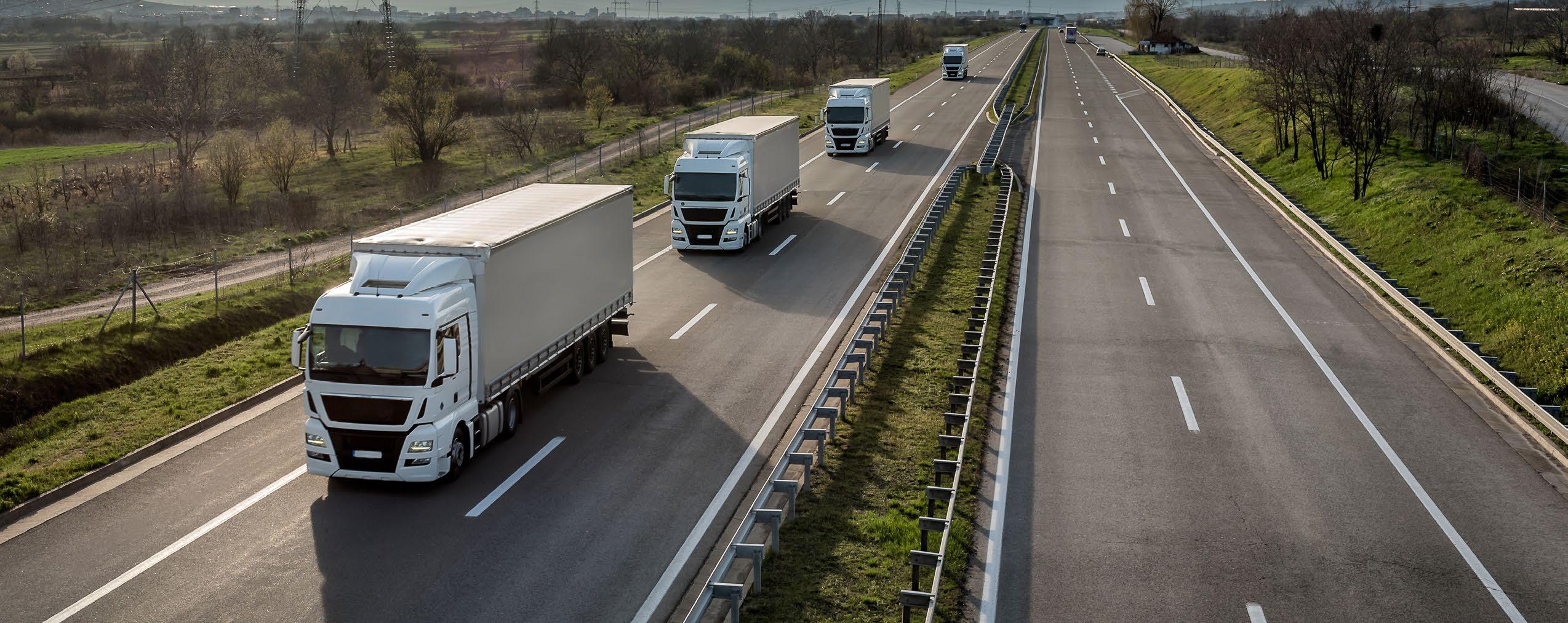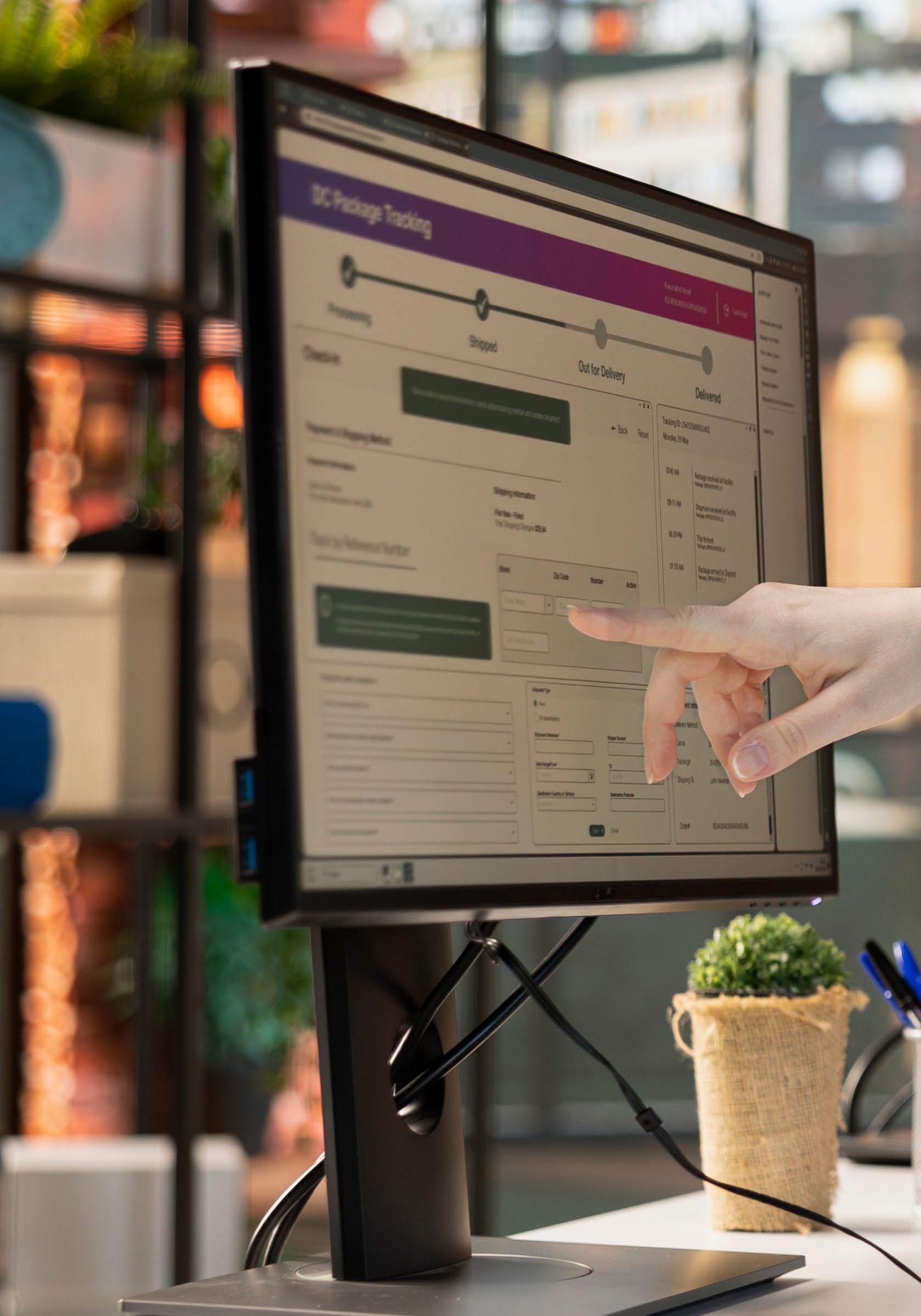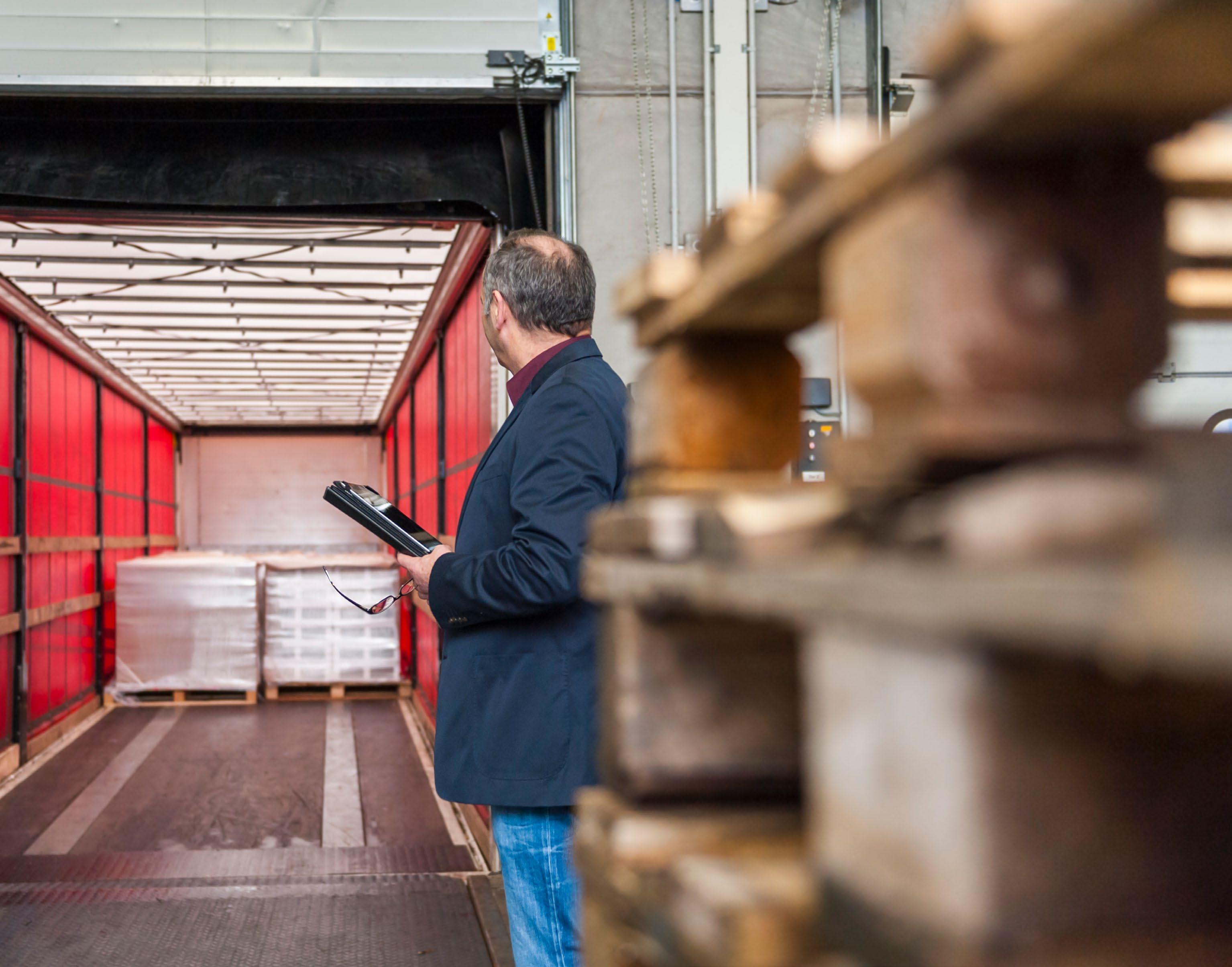10 Tactics To Lower Your Fleet Management Costs





If you’re running a retail, manufacturing or distribution business, chances are you’re feeling the squeeze. Delivery costs keep climbing, drivers are harder to find and keep, and customers expect Amazon-level delivery service while your budget stays flat.
Sound familiar?
You’re not alone. We’ve worked with hundreds of transport planners, logistics directors and operations leaders who face the same challenge: how do you deliver more for less without dropping the ball on customer service?
To help you rise to the challenge, we’re sharing 10 tactics for cutting fleet management costs.
These are real tactics being used by transport management leaders right now to solve the same problems you’re facing.
Some are quick wins you can implement immediately. Others require a sustained approach supported by scalable software. Either way, the ROI speaks for itself.


Create one master plan that optimises schedules across your distribution centres.
If you’ve got multiple DCs, ask yourself this: are you managing each location separately? If so, you’re probably leaving money on the table every day.
Here’s a scenario we see constantly: DC 1 sends a truck to deliver near DC 2, while DC 2 sends a truck toward DC 1’s territory. Both trucks drive past each other, burning fuel and wasting time that could have been avoided with a single, coordinated plan.


A good routing and scheduling solution will flag these crossovers, along with helping you:
Look at the big picture first: Instead of planning each DC in isolation, start with all your delivery requirements and let the system determine which facility should handle each order based on proximity, capacity and cost.
Make depot boundaries flexible: Traditional territory lines work well when demand is evenly distributed, but they break down when you have clusters of orders outside your usual areas. Smart planning adjusts boundaries dynamically based on your orders that day.
Keep local input: Centralised planning doesn’t mean ignoring local knowledge. Your site managers know their areas, so they should still be able to make final adjustments to routes and schedules when nearby conditions change.
The companies planning distribution holistically see results across their entire network. They’re cutting miles, reducing costs and making smarter use of resources.
Rising costs can force tough decisions. You may be under pressure to restructure operations, but you’re unsure of the real impact on budgets and service levels.
Smart transport leaders are using modelling capabilities to test “what-if” scenarios before spending real money. Advanced route optimisation systems can run these scenarios using your actual delivery data.
Before opening a new facility: Model how a satellite location will affect your delivery costs and service times.
Before changing your fleet mix: Test whether smaller trucks running multiple shifts might be more cost-effective than your current setup.
Before major route changes: See how consolidating or splitting territories will impact both costs and customer service.
Before lease renewals: Model whether a different location could improve your operations.



Optimise loading to get more deliveries per truck.

A new HGV costs more than £65,000. Every time you send one out half-empty, you’re paying for capacity you’re not using.
“Full” isn’t always full. We’ve seen trucks marked as at capacity by weight when they’re only half-full by volume. That’s an expensive oversight.
Here’s what companies with optimised loading do differently:
Monitor multiple constraints simultaneously: Weight, volume, number of pieces, pallets; optimise for all of them, not just one.
Match the right vehicle to the right route: Your temperature-controlled truck shouldn’t be delivering non-refrigerated goods. Your lift-gate truck shouldn’t be delivering to locations with tight loading areas where there isn’t enough clearance to safely operate the platform.
Use smart load-building algorithms: Let technology determine the optimal mix of shipments for each truck rather than relying on gut feel.
Leading UK logistics company Whistl has increased its delivery efficiency by 10% by improving its pallet footprint per route.
Get real visibility into your fleet capacity to reduce expensive outsourcing.
How often do you contract outside carriers because you think you don’t have capacity, only to find out later that three of your trucks were sitting idle? Your existing assets could work harder than you realise; you just need to see them clearly.
Real-time fleet visibility makes better use of your resources by showing you:
Where every truck is right now: Not where it is supposed to be, but where it actually is.
When each truck will be available: Based on actual progress, not the original schedule.
Which trucks can handle additional loads:
Factoring in current capacity, driver hours and proximity to new pickup points.


UK supermarket chain Tesco has reduced ‘empty running’ by 12% and saved 150,000 miles each week by improving fleet visibility and optimising its transport schedules.
Sequence deliveries to minimise miles and maximise efficiency.
Here’s what we’ve learned from analysing thousands of delivery operations: most fleets drive 10-30% more miles than they need to. With an average haulage price per mile of £1,65, that’s real money lost every day.
Route planning seems straightforward until you factor in weight distribution, traffic patterns, customer requirements, truck specifications and driver regulations. Suddenly, getting from A to B becomes more complex.


Here’s where smart route planning makes a real difference to your fleet management:
Sequence by weight: Deliver heavy items first. Our studies show this can reduce fuel consumption by 2.3%.
Use accurate location data: GPS coordinates beat addresses every time. Street-level mapping and geo-fencing eliminate the time drivers waste hunting for locations.
Account for infrastructure: Ensure your routing considers bridge heights, weight restrictions and truck-prohibited roads. A 30-minute detour because your vehicle can’t fit under a bridge destroys your schedule.
Build in real-world timing: Use actual road speeds and traffic patterns, not theoretical drive times.
Plan for customer requirements: Some customers need rear-door access, others require side unloading. Factor these constraints into your routing from the start.
By planning smarter routes, you’re not just saving time and fuel. You’re creating routes your drivers can easily navigate, which reduces stress and improves retention.
Compare planned vs. actual performance to spot improvement opportunities.
Creating great route plans is only half the equation. If your drivers don’t follow them, or if your planning assumptions are wrong, you can’t make the savings you anticipate.
Track actual vs. planned stop times: If you’re scheduling 20-minute stops but deliveries consistently take 15 minutes, that extra five minutes per stop adds up to significant additional capacity.
Monitor route adherence: When drivers deviate from planned routes, understand why. Sometimes they know something you don’t. Other times they need coaching.
Identify planning blind spots: If certain customers consistently take longer than expected, update your planning parameters.
Use data for driver conversations: Instead of “why were you late?” try “I see you made an unscheduled stop at 11:30, what happened there?”


Blackheath Products, a leading distributor to the construction and furniture industries, reduced its mileage by 20% by understanding the realities of its delivery schedule and increasing route planning accuracy.
Automate route planning so your team can focus on higher-value work.
Your transport planners are skilled professionals, with many earning over £33,000 annually. Are they solving problems that require expertise? Or are they spending their time on manual tasks that software can do in minutes?
Automate the calculations: Let routing algorithms handle the complex equation of optimising hundreds of stops across dozens of vehicles with multiple constraints.
Consolidate planning roles: Instead of having multiple planners at each location, centralise planning with fewer people managing more volume.
Redeploy expertise: Move your experienced professionals to driver training, customer relationship management, process improvement and other initiatives that need human insight. Your people are too valuable to spend their time on work that computers can do better and faster.


A global food distributor we partner with makes more than 2,000 deliveries each week. By automating its route planning, the distributor has increased truck utilisation by 3% while also shortening average driver hours per route by more than 6%.
Unhappy drivers are more likely to make mistakes, provide poor customer service and eventually quit.
The organisations with the lowest driver turnover create working conditions that encourage driver loyalty:
Make route assignments fair: Ensure all drivers have equal chances of getting good routes. Favouritism kills morale faster than almost anything else.
Build realistic schedules: A nine-hour planned route that consistently takes 11 hours creates stress. Generate routes that drivers can complete in the time allocated.
Accommodate personal needs: When possible, factor driver preferences into scheduling. A little flexibility will help you hold onto committed and hardworking staff.
Ensure compliance: Automatically check that all routes meet hours-of-service regulations. Drivers shouldn’t have to worry about getting violations.
Provide performance feedback: Aggressive acceleration, harsh braking and inconsistent driving habits can reduce fuel efficiency by 10-40% . Regular, data-driven feedback helps drivers improve their driving style.




Improve on-time performance to reduce costs and increase customer satisfaction.
Late deliveries cost you money in ways you might not realise. Drivers idling while waiting for customers to be ready. Subsequent deliveries getting delayed. Sometimes you lose the delivery slot entirely and have to reschedule.
Here’s how to improve on-time performance:
Eliminate assignment errors: Use mobile technology and scanning to ensure the right driver gets the right load. Simple mistakes at dispatch can derail entire routes.
Communicate precise windows: Give customers specific delivery times. This reduces waiting time and improves customer planning.
Provide real-time tracking: Let customers see where their delivery is and get automatic updates about any delays. Consistent service helps them operate more efficiently, which makes them more likely to work with you long-term.
Build realistic schedules: Include buffers for traffic, loading delays and other predictable issues.
Use electronic proof of delivery: Eliminate physical paperwork and improve customer communication.
Calculate true cost-to-serve so you can price jobs profitably.
How do you know if a job is profitable if you don’t know what it costs to serve that customer?
Too many companies price deliveries based on gut feel or competitive pressure rather than actual calculations that factor in:
Delivery complexity: A single pallet to a dock door costs less than a multi-piece delivery to a third-floor flat.
Geographic factors: Distance matters, but so does how well the delivery fits with your existing routes.
Service requirements: Special delivery windows, white-glove service or other customisations all have costs.
Integration impact: How does new business affect your existing operation? If you currently require 50 trucks covering 20,000 miles weekly, and adding a new customer expands that to 53 trucks covering 21,500 miles, you can quantify the exact cost increase and price.
Armed with real cost data, your sales team can negotiate profitably instead of educated guesswork or generic rate card pricing.


Here’s the reality: many of the tactics we’ve shared depend upon transport management technology that can handle complex, multiconstraint optimisation in real-time.
Your spreadsheets and basic routing tools simply can’t manage the complexity involved in optimising hundreds of deliveries across dozens of vehicles with multiple constraints.
Steve Anderson from AAH Pharmaceuticals summarises the benefits of transport solutions perfectly:
“[It’s] enabled us to effectively re-evaluate our transport operation with minimum fuss. We are already seeing huge cost savings…and significant improvements in customer service. We are now able to guarantee customer delivery times to the nearest 15 minutes.”

Automated route planners that consider constraints 10-30% reduction in miles driven
Real-time tracking and performance measurement Up to 20% reduction in transport costs
AI load optimisation that maximises vehicle utilisation Significant improvements in on-time delivery performance
Scenario modelling for strategic planning
driver retention and job satisfaction Integration with customer communication systems
customer service and loyalty

Aptean’s transport management solutions help companies across retail, manufacturing and logistics cut costs while improving service, with measurable ROI.
Advanced route optimisation that automates planning, manages resources intelligently, and provides the strategic scenario planning you need to make smart decisions.
Real-time visibility into route performance with integrated tracking that shows you what’s happening versus what you planned. Make better decisions with better data.


Complete multi-modal transport management that handles everything from shipment planning and carrier procurement to execution, tracking and freight audit.
Streamline your final mile with comprehensive customer notifications, realtime tracking and digital proof management.
Purpose-built for retailers managing customer deliveries with self-service scheduling, tailored delivery windows and automated notifications.
Interested to see how Aptean solutions can improve your transport management?
Contact us at info@aptean.com or visit www.aptean.com.
We’ve spent over 30 years helping transport leaders control costs without compromising customer service.
Our customers aren’t just implementing new software; they’re transforming their wholesale and distribution operations with solutions designed specifically for the complexities of modern transport management.

Aptean is a global provider of industry-specific software that helps manufacturers and distributors effectively run and grow their businesses. Aptean’s solutions and services help businesses of all sizes to be Ready for What’s Next, Now®. Aptean is headquartered in Alpharetta, Georgia and has offices in North America, Europe and Asia-Pacific.
To learn more about Aptean and the markets we serve, visit www.aptean.com.
Aptean and Ready for What’s Next, Now are Registered Trademarks of Aptean, Inc. All other company and productnames may be trademarks of the respective companies with which they are associated.